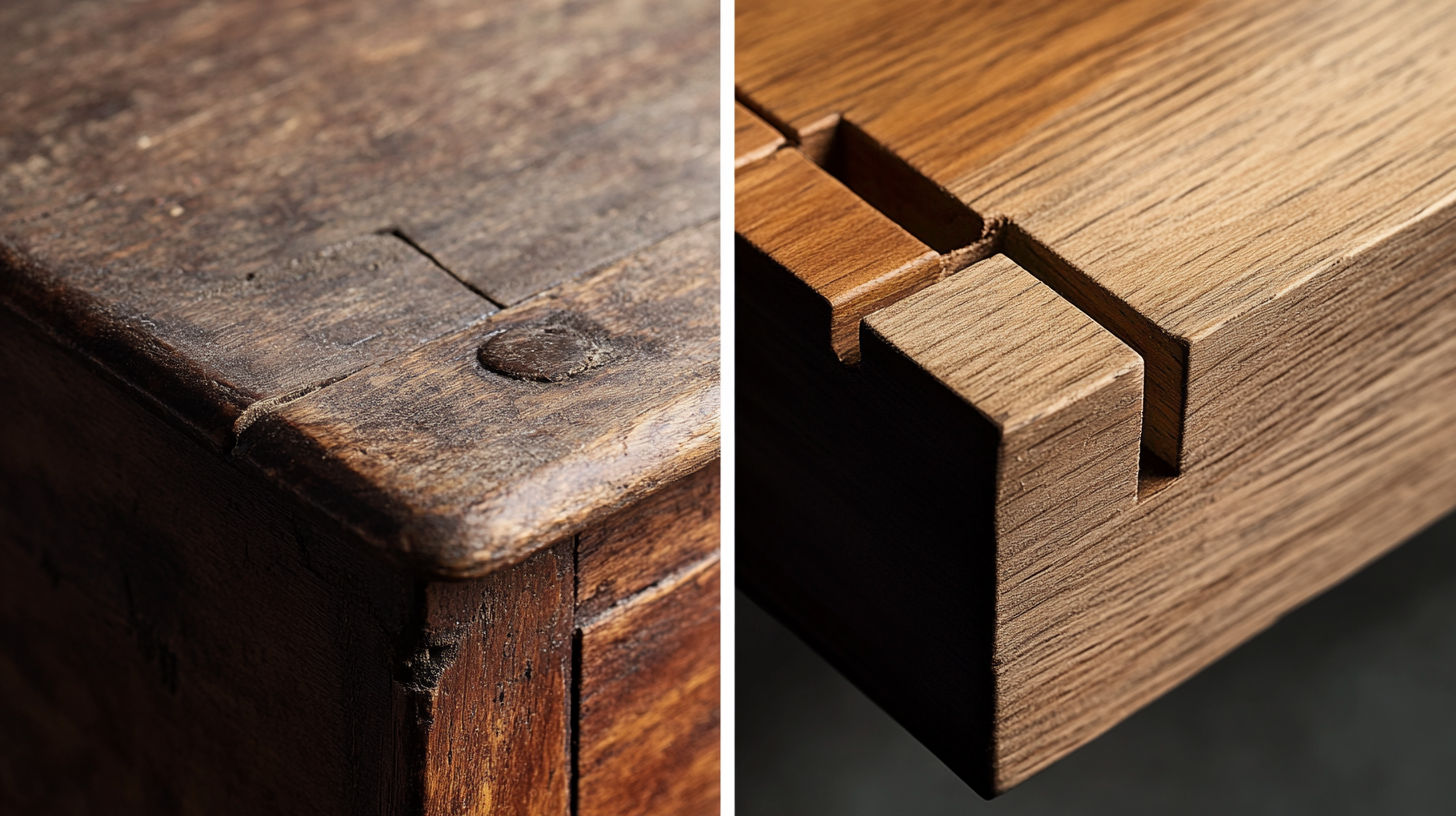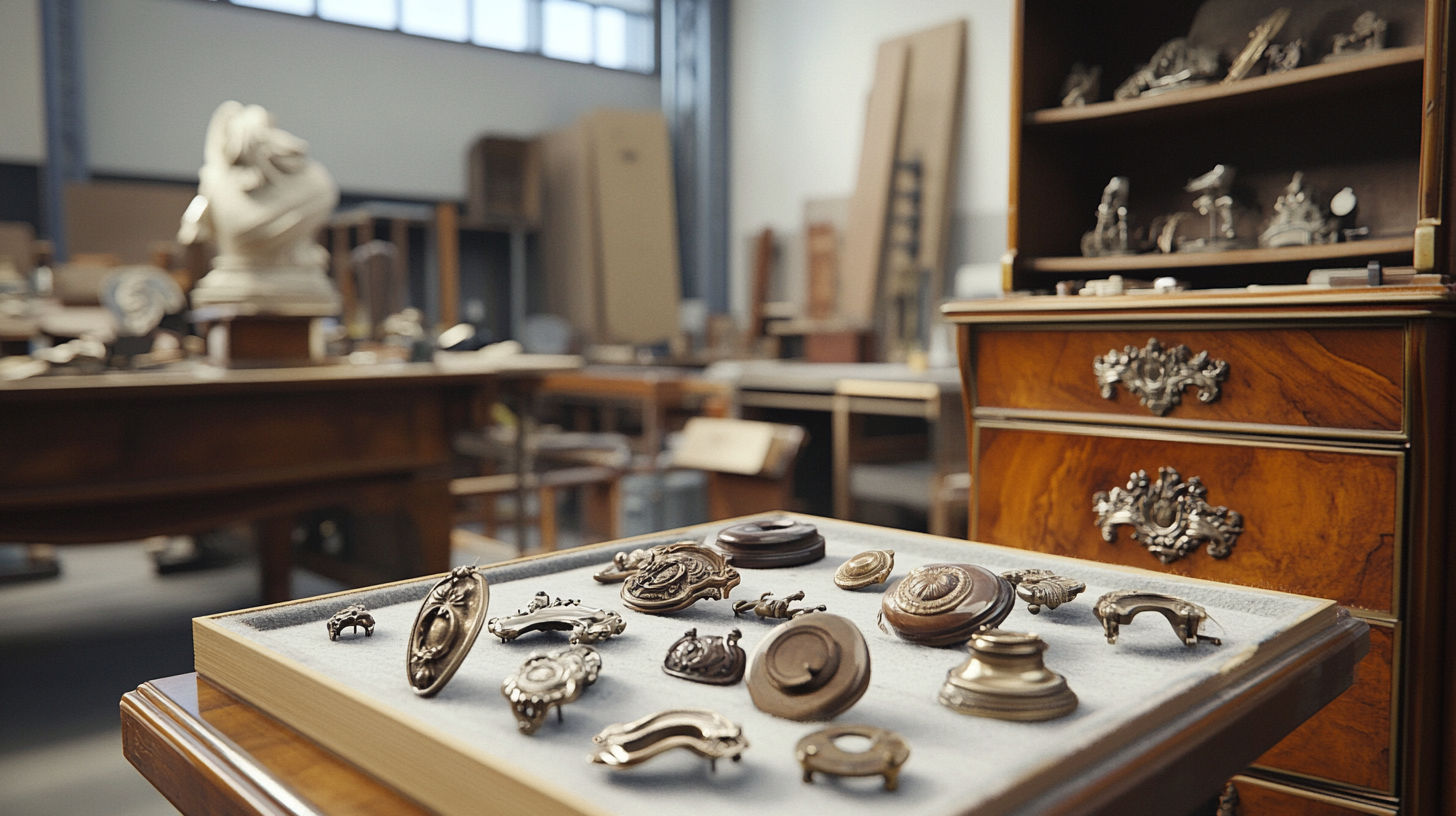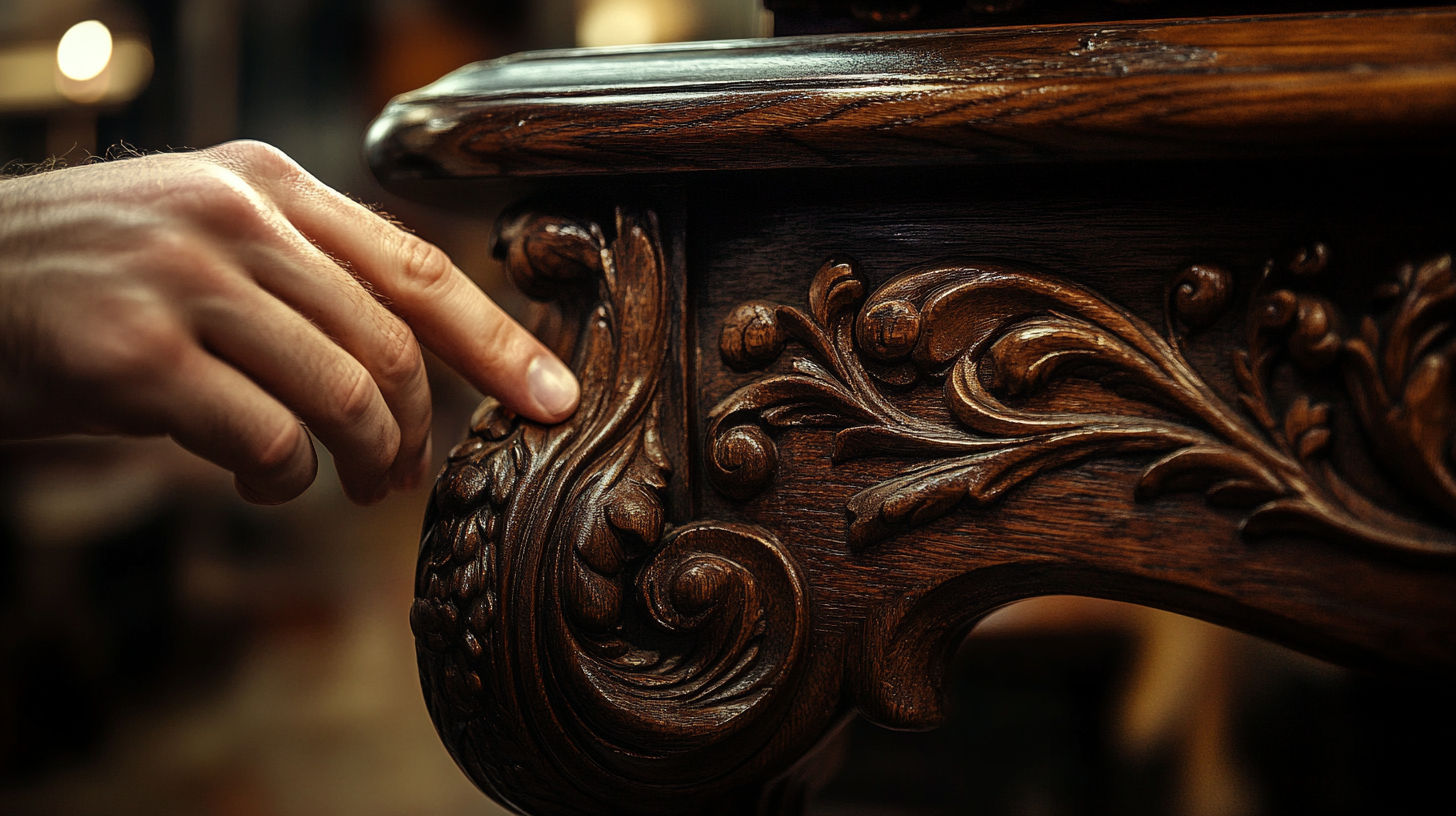Identifying antique furniture styles can be both a fascinating journey through history and a practical skill for collectors, interior designers, and antique enthusiasts. Whether you’re browsing an estate sale, visiting an antique shop, or simply curious about that heirloom piece in your family, understanding furniture styles can help you appreciate their historical significance and determine their value.
In this comprehensive guide, we’ll explore the distinctive characteristics of major antique furniture periods, providing you with the knowledge to identify styles ranging from Tudor and Baroque to Mid-Century Modern. We’ll analyze construction techniques, materials, ornamentation, and other key identifying features that define each period.
Why Understanding Antique Furniture Styles Matters
Antique furniture represents more than just functional household items; they are tangible connections to our past. Each piece tells a story about the era in which it was created, reflecting the social customs, technological capabilities, and aesthetic preferences of its time. By understanding furniture styles, you can:
- Accurately date and authenticate antique pieces
- Determine appropriate market value for buying or selling
- Make informed decisions about restoration approaches
- Create historically appropriate interior design schemes
- Appreciate the craftsmanship and artistry of different periods
Most importantly, identifying antique furniture styles allows you to recognize quality craftsmanship and distinguish genuine antiques from reproductions. As M.S. Rau notes, understanding the identifying characteristics of antique furniture styles by period reveals their unique historical context.
Antique Furniture Market Insights
The Fundamentals of Antique Furniture Identification
When examining an antique furniture piece, several fundamental aspects can help determine its age, authenticity, and style. According to Home and Garden, the first giveaway is often the joinery, as machine-cut furniture wasn’t produced until about 1860.
Construction Techniques
The methods used to construct furniture can tell you a lot about when it was made:
- Joinery: Hand-cut dovetails (pre-1860) vs. machine-cut joints (post-1860)
- Nails and Screws: Square-head nails (pre-1830s) vs. round machine-cut nails (post-1830s)
- Wood Selection: Primary woods (visible surfaces) vs. secondary woods (hidden areas)
- Tool Marks: Hand tool marks indicate earlier pieces, while uniform surfaces suggest machine processing
Materials Used
Different materials were popular or available during various periods:
- Woods: Oak (16th-17th century), Walnut (late 17th-early 18th century), Mahogany (18th-19th century), Rosewood (19th century)
- Upholstery: Horsehair, cotton, wool, silk, and later synthetic materials
- Hardware: Brass, bronze, wood, or iron depending on the period
- Decorative Elements: Inlays, veneers, marquetry, lacquer, and gilt work
Maker’s Marks and Labels
According to Homes Direct 365, manufacturer marks can be crucial for identification:
- Look underneath pieces, on the backs, or inside drawers
- Check for paper labels, stamps, or metal plaques
- Research the identified maker to determine period and value
A Timeline of Major Antique Furniture Styles
Evolution of Antique Furniture Styles
- 1500-1600
Tudor & Elizabethan
Characterized by solid oak construction, heavy proportions, and gothic influences with linenfold paneling and carved decoration. - 1600-1700
Jacobean & Carolean
Featured elaborate turned elements, ornate carved surfaces, and architectural influences. Oak remained dominant with some walnut introduction. - 1700-1750
Queen Anne & Early Georgian
Marked by graceful curves, cabriole legs, and shell motifs. Walnut became the wood of choice, with more refined proportions. - 1750-1790
Chippendale & Neoclassical
Influenced by Chinese, Gothic, and Rococo styles. Mahogany became predominant with elegant carvings and intricate details. - 1790-1830
Federal & Empire
Inspired by ancient Greece and Rome with symmetrical designs, straight lines, and patriotic motifs in America. - 1830-1900
Victorian
Diverse styles including Gothic Revival, Rococo Revival, and Renaissance Revival with ornate decorations and dark woods. - 1900-1950
Arts & Crafts, Art Deco
Arts & Crafts featured simplicity and natural materials. Art Deco showcased bold geometric patterns and exotic materials. - 1945-1975
Mid-Century Modern
Characterized by clean lines, minimal ornamentation, and organic forms using new materials and manufacturing techniques.
Identifying Renaissance & Early Baroque Styles (1500-1700)
Tudor & Elizabethan Style (1500-1603)
Tudor furniture represents some of the earliest surviving antique furniture you’re likely to encounter. According to Fine Art Restoration, Tudor pieces are characterized by:
- Materials: Almost exclusively oak, often left in its natural color
- Construction: Sturdy, substantial, and built to last with mortise-and-tenon joints
- Decoration: Linenfold paneling, gothic arches, and carved religious symbolism
- Features: Heavy, box-like forms with little concern for comfort
- Common Items: Joint stools, trestle tables, court cupboards, and bedsteads
Jacobean Style (1603-1660)
Following the Tudor period, Jacobean furniture maintained some of the heaviness but began incorporating new design elements:
- Materials: Primarily oak with some walnut for finer pieces
- Construction: Sturdy frame-and-panel construction
- Decoration: Elaborate turned elements, especially on chair and table legs
- Features: Ornate carved surfaces with architectural motifs
- Common Items: Gate-leg tables, wainscot chairs, and chests with applied decorative moldings
Carolean/Restoration Style (1660-1685)
After the English Civil War and the restoration of the monarchy, furniture showed continental influences:
- Materials: Increasing use of walnut, with some oak still present
- Construction: More refined joinery and lighter proportions
- Decoration: Elaborate carvings, often with scrolls, fruits, and flowers
- Features: Caned chairs, spiral-turned legs, and more comfortable designs
- Common Items: Caned chairs, daybeds, and cabinets on stands
The Golden Age: Queen Anne to Georgian Styles (1700-1800)
William & Mary Style (1685-1720)
Bridging the 17th and 18th centuries, this transitional style introduced important innovations:
- Materials: Primarily walnut, with some maple and cherry in American examples
- Construction: Refined mortise and tenon joints, early use of cross-grain moldings
- Decoration: Trumpet-turned legs, Spanish or bun feet, and inlay work
- Features: Tall, narrow proportions with an emphasis on vertical lines
- Common Items: Highboys, lowboys, and chairs with tall, narrow backs
Queen Anne Style (1720-1760)
According to River Oaks Houston, this elegant style is defined by:
- Materials: Walnut dominates, with some mahogany introduction late in the period
- Construction: Refined joinery with invisible construction techniques
- Decoration: Shell motifs, C-scrolls, and minimal carving compared to earlier styles
- Features: Graceful curves, cabriole legs, and pad or claw-and-ball feet
- Common Items: Wing chairs, tea tables, and dressing tables
Chippendale Style (1750-1790)
Named after the English cabinetmaker Thomas Chippendale, this style reflected various influences:
- Materials: Primarily mahogany, with some walnut and cherry
- Construction: Highly refined dovetail joints and superior craftsmanship
- Decoration: Elaborate carvings of Chinese, Gothic, and Rococo inspiration
- Features: Cabriole legs with claw-and-ball feet, pierced chair back splats
- Common Items: Ribbon-back chairs, secretary desks, and card tables
Neoclassical Styles (1760-1800)
This category includes Hepplewhite and Sheraton styles, which embraced classical motifs:
- Materials: Mahogany and satinwood with exotic wood inlays
- Construction: Light, refined construction with straight, tapered legs
- Decoration: Shield-back chairs, urns, swags, and geometric inlays
- Features: Light, elegant proportions with straight lines predominating
- Common Items: Shield-back chairs, pembroke tables, and sideboard
18th Century Furniture Value Ranges
Average market prices for authentic period pieces in good condition
</tbody>
</table>
19th Century Styles: From Federal to Victorian
Federal Style (1790-1830)
In America, the Federal style embraced the new nation’s identity:
- Materials: Primarily mahogany with maple and cherry for secondary woods
- Construction: Refined dovetail joints and precise construction
- Decoration: Patriotic eagles, stars, and classical motifs
- Features: Straight, tapered legs and balanced proportions
- Common Items: Secretaries, card tables, and dining tables with drop leaves
Empire Style (1805-1830)
The Empire style drew inspiration from Napoleon’s empire and ancient Egypt and Rome:
- Materials: Dark mahogany, often with gilt bronze mounts
- Construction: Massive, heavy construction with solid primary elements
- Decoration: Classical columns, animal-paw feet, and Egyptian motifs
- Features: Bold, architectural forms with imposing presence
- Common Items: Pillar-and-scroll tables, grecian couches, and massive sideboards
Victorian Styles (1830-1900)
The Victorian era encompassed multiple revival styles:
Gothic Revival (1840-1860)
- Identifying Features: Pointed arches, quatrefoils, and medieval motifs
- Common Materials: Dark oak and walnut with heavy carving
Rococo Revival (1845-1870)
- Identifying Features: Naturalistic floral carvings, asymmetrical designs
- Common Materials: Rosewood and walnut with marble tops
Renaissance Revival (1860-1880)
- Identifying Features: Architectural elements, burled panels, and geometric inlays
- Common Materials: Walnut with ebonized details
Eastlake (1870-1890)
- Identifying Features: Angular, geometric forms with incised decoration
- Common Materials: Oak and walnut with machine-turned elements
According to Antique Trader, Victorian furniture can be identified by studying the overall forms, decorative elements, and construction details. The ornate carving, dark woods, and eclectic mix of revival styles are hallmarks of this diverse period.

Early 20th Century Styles (1900-1950)
Arts & Crafts Movement (1880-1920)
Also known as Mission style in America, this movement valued honest craftsmanship:
- Materials: Quarter-sawn oak, often fumed to a rich brown color
- Construction: Exposed joinery, emphasizing handcraft over machine production
- Decoration: Minimal ornamentation with focus on construction elements
- Features: Rectilinear forms with visible tenons and pegs
- Common Items: Morris chairs, settle sofas, and simple tables with exposed joinery
Art Nouveau (1890-1910)
Characterized by organic, flowing lines and natural forms:
- Materials: Various woods with exotic materials like mother-of-pearl inlay
- Construction: Complex curved elements and innovative forms
- Decoration: Whiplash curves, stylized flowers, and sensuous female forms
- Features: Asymmetrical designs with fluid, organic lines
- Common Items: Display cabinets, chair backs with carved floral motifs
Art Deco (1920-1940)
According to The Spalty Dog, Art Deco furniture can be recognized by:
- Materials: Exotic woods, chrome, glass, and other industrial materials
- Construction: Combination of handcraft and machine techniques
- Decoration: Bold geometric patterns, zigzags, chevrons, and stepped forms
- Features: Streamlined forms with contrasting materials and vibrant colors
- Common Items: Cocktail cabinets, club chairs, and vanity tables
Mid-Century Modern (1945-1975)
While not strictly antique by the 100-year rule, mid-century modern pieces are highly collectible:
- Materials: Teak, walnut, and new materials like molded plywood and fiberglass
- Construction: Industrial production with innovative manufacturing techniques
- Decoration: Clean lines with minimal ornamentation
- Features: Organic forms, tapered legs, and emphasis on functionality
- Common Items: Lounge chairs, credenzas, and sectional sofas

Authentication Techniques: Spotting Genuine Antiques
Examining Construction Methods
According to The Hoarde, authentic antique furniture will show specific construction characteristics:
- Dovetail Joints: Hand-cut dovetails are irregular with slight variations, while machine-cut dovetails (post-1860) are perfectly uniform
- Saw Marks: Circular saw marks appeared after 1830, while earlier pieces show irregular hand-saw marks
- Nails and Screws: Look for square-head nails (pre-1830) or handmade screws with off-center slots
- Wood Shrinkage: Authentic antiques will show signs of wood movement and shrinkage over time
Identifying Age Through Patina
Genuine patina is difficult to fake and provides strong evidence of age:
- Surface Finish: Natural darkening of wood, especially in areas exposed to handling
- Wear Patterns: Consistent with the piece’s function and normal use
- Color Variation: Subtle variations in color that occur naturally over decades
- Oxidation: Changes in metal elements that cannot be easily reproduced
Checking for Maker’s Marks
As noted by Homes Direct 365, maker’s marks can be crucial for authentication:
- Location: Check the underside, back, or inside drawers for stamps, labels, or signatures
- Verification: Research identified marks in furniture reference guides
- Consistency: Ensure the mark is appropriate for the apparent age and style
Antique Furniture Authentication Checklist
Use this checklist to help determine if a piece is genuinely antique
- Hand-cut dovetail joints with slight irregularities
- Square nails or screws with irregular slots
- Natural wood shrinkage and movement patterns
- Authentic patina consistent with age and use
- Period-appropriate materials and construction
- Signs of period-appropriate repairs or alterations
- Consistent wear patterns on feet, edges, and handles
- Documented provenance or maker's marks
Using Technology to Identify Antique Furniture
Mobile Apps for Identification
Several apps can help with antique furniture identification:
- Marcel: According to user reviews, this app allows you to take a photo of furniture and receive information about its historical context, designer influences, and material details.
- Google Lens: While not specifically for antiques, this visual search tool can help identify similar styles and provide relevant search results.
- Barnebys: An app focused on the art and antiques market that can help with identification and valuation.
Online Databases and Resources
Numerous online resources can aid in identification:
- Museum Databases: Many major museums have digitized their furniture collections with detailed information
- Auction Archives: Websites like Sotheby’s and Christie’s maintain searchable archives of past sales
- Educational Institutions: Universities with design programs often maintain furniture style guides
Virtual Expert Consultations
When technology isn’t enough, virtual expert consultations offer personalized assistance:
- Online Appraisal Services: Services that allow you to submit photos for expert review
- Virtual Auction House Consultations: Many auction houses offer preliminary assessment services
- Collector Forums: Online communities where experienced collectors can help with identification
Frequently Asked Questions
Common Questions About Antique Furniture Identification
How do I identify my antique furniture?
To identify antique furniture, examine these key elements:
- Construction techniques: Look for hand-cut dovetails, square nails, and other period-appropriate joinery
- Materials: Identify the primary and secondary woods used
- Style characteristics: Compare the piece’s design elements to known period styles
- Maker’s marks: Search for labels, stamps, or manufacturing tags underneath, on the back, or in drawers
- Patina and wear: Assess the natural aging and wear patterns consistent with genuine antiques
According to The Hoarde, genuine labels will show signs of aging, as these marks can be faked on reproductions.
Is there an app for identifying antique furniture?
Yes, there are several apps that can help identify antique furniture:
- Marcel: A specialized app that identifies furniture from photos and provides historical context and design information
- Google Lens: A visual search tool that can match furniture to similar examples online
- Barnebys: An app focused on art and antiques that includes furniture identification features
While these apps are helpful tools, they should be used as a starting point rather than a definitive authority. For valuable pieces, consulting with a professional appraiser is recommended.
What is the 100-year rule for antiques?
The traditional definition of an antique requires that an item be at least 100 years old and in original condition. This standard is recognized by many major auction houses, antique dealers, and customs authorities worldwide.There are exceptions to this rule:
- Motor vehicles may qualify as antiques when they’re as young as 25 years old
- Some collectors consider items from specific design periods (like Art Deco or Mid-Century Modern) as collectible even if they haven’t reached the 100-year threshold
For import/export purposes, the 100-year rule is often used by customs authorities to determine duty-free status for genuine antiques.
Where can I find markings on antique furniture?
Manufacturer marks on antique furniture are typically hidden to preserve the piece's aesthetic appearance. Common locations to check include:
- The underside of the piece
- The back side or back panels
- Inside or underneath drawers
- The bottom edges of chair seats
- Inside cabinet doors
- On the back of headboards or footboards
According to Homes Direct 365, these marks may appear as paper labels, impressed stamps, metal plaques, or hand-written signatures. Be sure to examine the piece thoroughly using good lighting, as marks can be quite subtle or may have faded over time.
How can I tell if furniture is truly antique or just a reproduction?
To distinguish genuine antiques from reproductions, look for these telltale signs:
- Construction methods: Authentic antiques will show period-appropriate construction techniques like hand-cut dovetails or mortise-and-tenon joints
- Materials: Examine the wood types and secondary materials to ensure they match the purported period
- Patina: Natural aging creates a patina that’s difficult to fake convincingly
- Wear patterns: Look for natural wear consistent with use over decades or centuries
- Hardware: Check that hinges, pulls, and other hardware are appropriate for the period
- Machine marks: Be suspicious of uniform machine marks on pieces claimed to predate industrial woodworking
Remember that many high-quality reproductions are made to deceive, so when in doubt, consult with an expert appraiser or dealer specializing in the relevant period.
How does furniture style affect its value?
Furniture style significantly impacts value through several factors:
- Rarity: Styles with fewer surviving examples typically command higher prices
- Historical importance: Pieces from pivotal design periods or by influential makers are more valuable
- Craftsmanship: Styles known for exceptional craftsmanship (like Chippendale or Federal) often bring premium prices
- Current trends: Market demand fluctuates, with some styles experiencing renewed popularity
- Regional variations: Certain regional interpretations of styles (like Philadelphia Chippendale) can be particularly valuable
It’s important to note that condition, provenance, and authenticity will always significantly affect value regardless of style. A genuine Queen Anne highboy in excellent condition will typically be worth more than a heavily restored Chippendale piece, even though Chippendale might generally be the more sought-after style.
Resources for Further Learning
External Resources for Antique Furniture Identification
M.S. Rau: Guide to Antique Furniture Styles
Comprehensive guide to antique furniture periods and their identifying characteristics from a renowned antiques dealer.
Antique Trader: Furniture Styles Primer
Detailed identification guide for collectible tables, chairs, chests, and more with information on determining furniture styles through careful study.
Fine Art Restoration: Identifying Antique Furniture
Expert guide on identifying antique furniture from Tudor and Baroque to Mid-Century Modern styles with restoration considerations.
The Hoarde: How to Tell if Furniture is Antique
Practical guide on authenticating antique furniture with tips on examining labels, construction techniques, and signs of age.
River Oaks Houston: American Furniture Styles
In-depth discussion of classic American furniture styles from 1620 to 1876 with historical context and design evolution.
Homes Direct 365: Antique Furniture Makers Marks
Guide to finding and identifying furniture maker's marks with tips on locating hidden markings and understanding their significance.
The Spalty Dog: Identifying Vintage Furniture Styles
Comprehensive guide to recognizing Art Deco influences and other vintage furniture styles with specific design elements to look for.
Conclusion: The Joy and Value of Identifying Antique Furniture
Understanding how to identify antique furniture styles is more than just an academic exercise—it’s a skill that enhances appreciation, guides collecting decisions, and informs proper conservation. By learning to recognize the distinctive characteristics of each period, you can navigate the world of antiques with greater confidence and insight.
Whether you’re a serious collector, an interior designer, or simply the caretaker of a family heirloom, the knowledge of furniture styles connects you to the rich history of craftsmanship and design that these pieces represent. Each curve of a Queen Anne leg, each intricate inlay on a Federal sideboard, and each clean line of a Mid-Century Modern chair tells a story about the people who created it and the world they inhabited.
As you develop your eye for antique furniture styles, remember that expertise comes with time and exposure. Visit museums, browse antique shops, attend auctions, and study quality examples whenever possible. With patience and curiosity, you’ll soon find yourself naturally recognizing the subtle differences that distinguish one period from another.
The next time you encounter an intriguing piece of old furniture, you’ll be better equipped to appreciate its historical context, understand its design language, and perhaps even uncover a hidden treasure that others have overlooked.
Get a Professional Appraisal
Unsure about your item’s value? Our certified experts provide fast, written appraisals you can trust.
- Expert report with photos and comps
- Fast turnaround
- Fixed, upfront pricing
No obligation. Secure upload.
| Category | Price | Notes |
|---|---|---|
| Queen Anne Highboy | $15,000 - $45,000 | Original hardware and finish command premium |
| Chippendale Side Chair | $2,500 - $8,000 | Philadelphia examples fetch highest prices |
| Hepplewhite Sideboard | $8,000 - $20,000 | Value depends on inlay condition and provenance |
| Sheraton Pembroke Table | $3,000 - $12,000 | Original surface patina significantly affects value |




